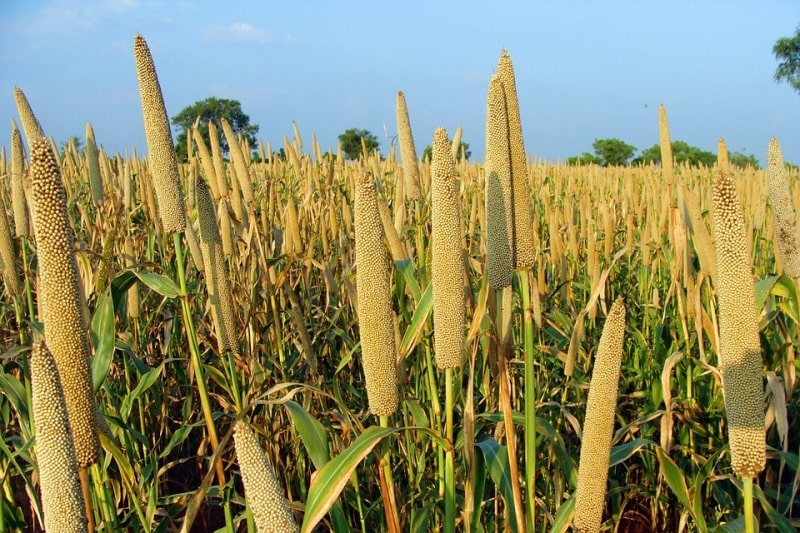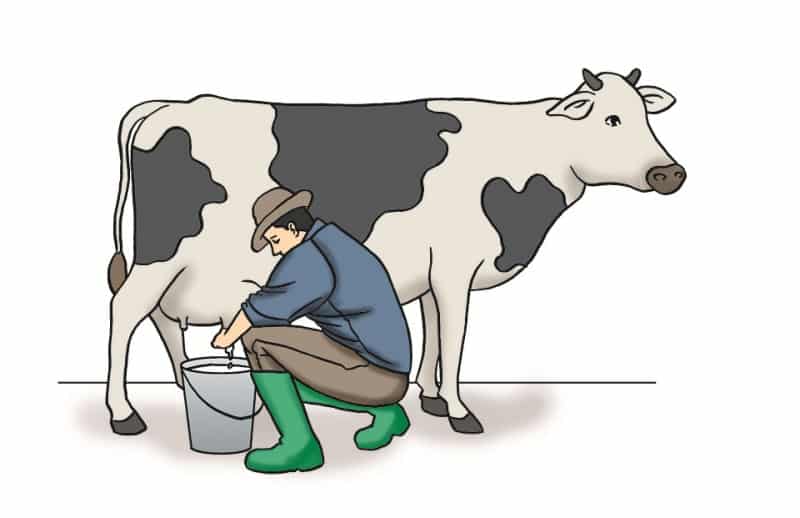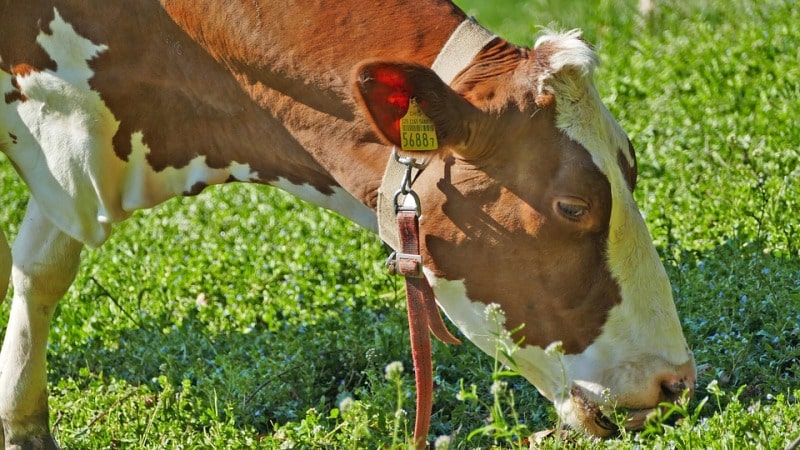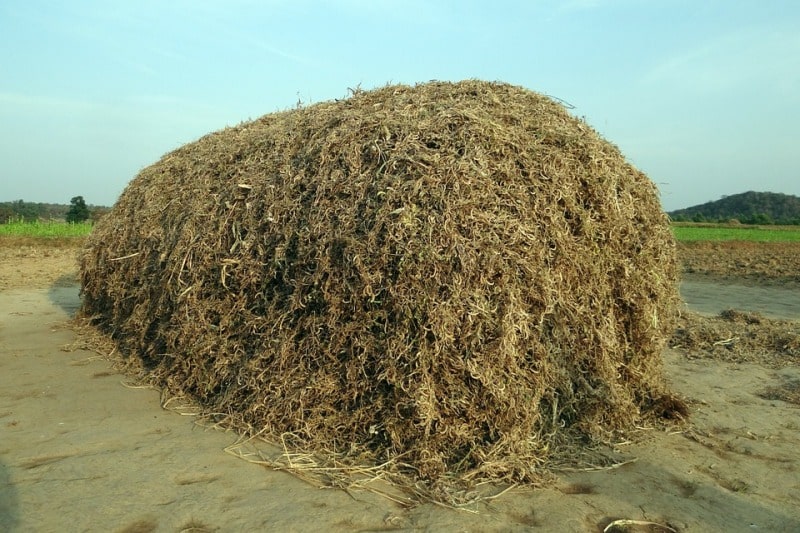A step by step guide for green fodder importance in milk production
Fodder production mainly refers to food given to the dairy animals, rather than that which they forage for themselves. Fodder crops are crops that are cultivated mostly for animal feed. If you are into commercial profitable dairy farming, you must be aware of green fodder importance in the milk production of dairy animals.
Here we discussed,
- Fodder production for dairy animals
- Importance of green fodder for dairy cows.
Fodder production:

Fodder production is one of the main important activities in dairying contributing to the profitability of the business. It is one of the areas that are neglected most often. Fodder provides an economic nutrient source which is highly relished by the dairy animals. A year-round supply of fodder can be certain if farmers cultivate seasonal and perennial fodder crops by adopting suitable crop sequences and surplus green fodder is preserved accurately in times of abundance for use through lean periods.
Following sections are explained about fodder production in dairy animals;
- Green fodder importance of in milk production
- Fodder varieties
- Conservation of fodder in the form of Silage and Hay
- Silage making
- Haymaking
- Urea ammonia treatment of crop residues
- Fodder mowers and pick-up devices
- Auto Pick up Balers
- Flail Mower, Chopper Loader
- Combine prevention/reversal mowers
Green fodder importance in milk production:

Green fodder is an economic supply of nutrients for dairy animals. It is very highly palatable and digestible. Micro-organisms there in green fodder help in improving the digestibility of crop residues under mixed feeding system. It helps in maintaining good health and improving the breeding efficiency of animals. Increased use of green fodder in the ration of animals can reduce the cost of milk production.
To reduce the gap between demand and availability of green fodder, there is require improving green fodder yield through enhanced use of improved fodder seeds. For ensuring year-round green fodder production, farmers want to adopt some following agricultural practices;
- Always use certified, truthfully labeled seed or planting material of improved high yielding varieties of fodder crops.
- Follow suggested package of practices for fodder cultivation such as land preparation, timely sowing, fertilizer application, irrigation, weed, and pest control and harvesting schedule.
- Growing short period varieties of fodder crops such as maize, sunflower, Chinese cabbage, turnip, cowpea, etc. between two main seasonal crops.
- Cultivate cereal fodder crops like bajra, maize, and sorghum along with fodder legumes like cowpea, cluster bean, and velvet bean.
- Cultivation of high yielding multi-cut perennial fodder crop like Hybrid Napier grass in fields and on boundaries of other crop fields.
- Cultivate guinea grass, a shade-tolerant fodder crop along with forage legumes like siratro or stylos under mixed cropping between trees rows in orchards.
- Harvest the multi-cut fodder crops at normal intervals (30 to 45 days) 10 cm height from ground level to get optimum production and quality fodder.
- Cultivate drought-tolerant perennial grasses like Anjan grass, Rhodes grass, sewan grass, and fodder trees like desi babool, neem, shisam, Kanchan, aaradu, khejri, subabul, and Gliricidia on fallow lands, wastelands or community for grazing.
You may also check Solar Subsidy, Loan Schemes for Agriculture.
Fodder varieties
Cultivating green grass within the farm is one of the main important factors to be successful in dairy farming. Many of the small-sized and medium-sized dairy farmers are not focusing much on cultivating green fodder. Feeding green fodder decreases intake of concentrate feeds which in turn increases profitability. There are different fodder varieties like Bajra Napier (Co-4), Guinea grass (Anjan grass), Fodder sorghum (CoFS-27), Multi-cut fodder Sorghum (CoFS-29), African tall maize, Legumes (Lucerne, Desmanthus, Stylo, Cowpea) and tree fodder varieties (Sesbania, Subabul, Glyricidia).

Conservation of fodder in the form of Silage and Hay
Availability of nutritious fodder throughout the year is essential for profitable dairy farming. But it changes from season to season. Then, every dairy farm must preserve the surplus fodder in the form of silage or hay. The surplus forages of the two glut seasons that are the rainy season that is August-September and winter season that is February-mid March can easily be carried over to the succeeding lean periods of fodder supply. During the lean periods of May and mid-July and November -December month the hay or silage can supplement the dry fodder and limited quantity of green fodder available to overcome the scarcity of fodder.
Silage making
As we already know about green fodder importance, it is obvious that silage made from green fooders also very important. Silage is prepared by compressing the chaffed green fodder in tight pits called silos. There are several types of silos such as pit silo, tower silo, trench silo but under village conditions, the ordinary pit silo is recommended.
It is identified as pickle of green fodder. It is simply digestible and highly palatable. Best quality silage can be ready from cereal fodder crops like Maize, Sorghum, Pearl millet, Oats and Barley which are rich in carbohydrates or sugars. Green fodder must be harvested at milking to dough stage of the crop, containing moisture content around 65 to 70 percent, ideal for silage making. After harvesting, fodder is chaffed to one to two-inch size for filling in silo pit. Silage storage structure or silo pit is to be constructed prior to initiating silage making. Surface silo is a perfect storage structure and to be constructed on raised ground to minimize the inflow of water. Size of the silo pit depends on the amount of fodder to be ensiled.
Silo pit with an area of one cubic meter (1-meter length x 1-meter width x 1-meter height) is satisfactory for ensiling 500 to 600 Kilograms of chaffed fodder. The chaffed fodder is filled in a strongly pressed layer of 10 cm each. Pressing of fodder can be completed manually in a small silo and through tractors on big size silo. After complete filling of silo pit, silage heap must be well sealed at the top with polythene sheet and 5 inches thick moist soil layer. Later, if some cracks are visible in the covered layer, more soil must be spread to seal it. Use of additives must be avoided in silage making. However, if fodder is not harvested at the proper stage, appropriate additives (molasses/common salt/ urea/formic acid) can be used during fodder filling. After 45 days silage is prepared for animal feeding. When green fodder is in deficit, silo pit can be opened from one side to take out the silage as per daily requirements of animals. It can be covered properly with polythene sheet after taking out of silage daily. Silage is a substitute for green fodder. However, initially, for 3 to 4 days, its feeding is limited @ 5 to 10 kg/animal/per day to adjust the animals on silage feeding.
Haymaking

Hay is a sun-dried green fodder, having moisture below 15 percent. It is a good supply of digestible dry matter and crude protein for dairy animals during deficit periods. The best quality hay is arranged from thin stem cultivated fodder crops like Lucerne, Oats and Sweet Sudan Grass during hot and dry summer months from March to May month. Some perennial pasture grasses like Guinea grass, Rhodes grass, Dhaman grass, Blue panic grass are suitable for making of hay.
You may be also interested in India Agro Based Industries.
To obtain best quality hay, these crops are cut at 50 percent flowering stage. After cutting, green foliage is evenly reaching on a dry surface in thin layers of 5 cm thick for sun drying. Every morning after 10 A.M. fodder is inverted manually or mechanically for quick and evenly drying. After 4 days to 5 days, when moisture reaches to less than 15 percent in the forages, hay is collected and bundles are made for storage. While drying, care must be taken that hay retains the leaves and green color, as it is an indicator of good quality hay. These bundles of hay must be stored in moisture and dust-free places like bunkers or godowns to maintain quality for a longer period. Hay can be fed @5 kg per animal per day with chaffing or without chaffing.
Urea ammonia treatment of crop residues
It is well known that green fodder, cattle feed and dry fodder in combination form the ideal nutritional supply for maintaining health and milk production of animals. But sometimes due to non-availability of green fodder in sufficient amount and the high price of cattle feed problems for the farmer to meet the nutritional demand of milking animals.
Normally, paddy, wheat, bajra, and sorghum straws are available in plenty with the farmers but these straws are deficient in nutrients and low in digestibility. Straws have less than 4 percent protein content. Urea treatment of straw increases its nutritive value by increasing the protein content to about 8 percent. Feeding urea treated straw can reduce the cattle feed requirement up to 30 percent.
Straw Treatment Method:
- At a time at least one-ton straw should be treated. We need 40 kg urea and 400 liters of water for the treatment of one-ton straw.
- Dissolve 4 kg urea in 40 liters amount of water.
- Spread 100 kg straw on the floor to form 3 to a 4-inch thick layer.
- Sprinkle 40 liters of arranged urea solution on the straw using gardener’s sprinkler. Then compress the straw with feet by walking on it.
- Spread another 100 kg of dry straw on top of this compressed straw, and arrange another 40 liters of urea solution again by dissolving 4 kg urea in 40 liters of water. Sprinkle the arranged urea solution over the second layer of straw and repeat the compaction by walking on the layer of treated straw. Likewise, repeat the process 10 times by spreading 10 layers of straw, sprinkling it with 4 % urea solution and then pressing with feet.
- Cover the treated straw heap with a new plastic sheet and spread some quantity of mud at the point where it touches the ground to prevent the produced ammonia gas to escape.
- In case the plastic sheet is not obtainable, cover the treated heap with dry straw. Then after putting some soil, cover the same with wet clay or cow dung layer to create it airtight.
Fodder mowers and pick-up devices
Due to labor shortage, many farmers are adopting grain harvesters or pickers intensively for managing food crops like wheat rice, maize, oilseeds, and pulses leading to huge loss of fodder biomass which was otherwise obtainable to dairy cattle in manual harvesting system. For reducing fodder wastage, the farmers require to introduce fodder mowers and auto pick up devices for effective management of fodder and recovery of straw after combining. Mowers are high-speed green fodder and straw harvesting machines having inbuilt options for threshing, chopping, trailer loading, stem cracking and conditioning.
You may also check the Biogas Production Process in India.
They are the most economical devices for straw recovery, silage making, haymaking, mulching, composting or fertigation. Mowers are known as roughage management machines used for intensive fodder production for higher protein and higher energy recovery at the right period of harvesting, storage, banking, and warehousing. Depending on the season, crop hardness, tenderness, thickness, height and moisture of different crops, different types of mowers are to be propagated. Following three kinds of straw securing and fodder management devices will be extremely useful in the near future;
- Auto Pick up Balers
- Flail Mower, Chopper Loader
- Combine prevention/reversal mowers.
Auto Pick up Baler:
Auto Pick up Baler is driven by 50 to 75 hp tractors. It picks up a swath width of about 1500 to 1800 mm. Straw picks up or hay picks up rate with this machine is about 1 to 2 MT per hour depending on crop and swath. Bales size can be adjusted from 10 to 20 kg. Small bales are simple to handle and can be transported to transit storage points with ease and minimum drudgery. Loading, unloading, and stacking of fodder becomes convenient after field baling. Also, onward trading and distribution are moderately convenient after baling. Left out the straw from dwarf varieties could be baled directly after combining. But for taller biomass additional disc or drum or sickle type mower is necessary before baling works. For managing high moisture biomass we need another machine known as collection inversion cum liner rake and so as to sundry the biomass before pick up & storage. The baler machine can work on about all types of biomass.
Flail Mower, Chopper Loader
Flail Mower, Chopper Loader is also driven by 50 to 75 hp tractors. It chooses a swath width of about 1300 to 1900 mm. Straw recovery rate with this machine is about 2 to 3 MT per hour depending on crop height and crop swath. The machine has a choice of blowing the fodder biomass back into the field for sun drying or fertigation or mulching as per specific needs of the farmer. For high moisture biomass collection, inversion cum liner rake is required so as to sundry the biomass before pick up and storage. The machine can work on all types of biomass. The mower ensures added advantage of high-speed silage and haymaking due to inbuilt chopping and cracking facilities.
Combine prevention/reversal mowers
Under this category, several kinds of smaller crop mowers are available now. Self-propelled Reaper Binder with 10 HP diesel engine is gaining momentum in India due to its versatile value in fodder as well as grain crops like wheat, rice, rain-fed sorghum, bajra, pulses, etc. The machine harvests the crops at zero levels and just 60 mm above the ground thus guarantees 100% straw recovery. Bundles made by the reaper binders are fully automatic or labor free and are quite handy. The mower machine can harvest about eight-acre in one day.
That’s all folks about green fodder importance of dairy animals.
You may be interested in Growing Hydroponic Cauliflower.